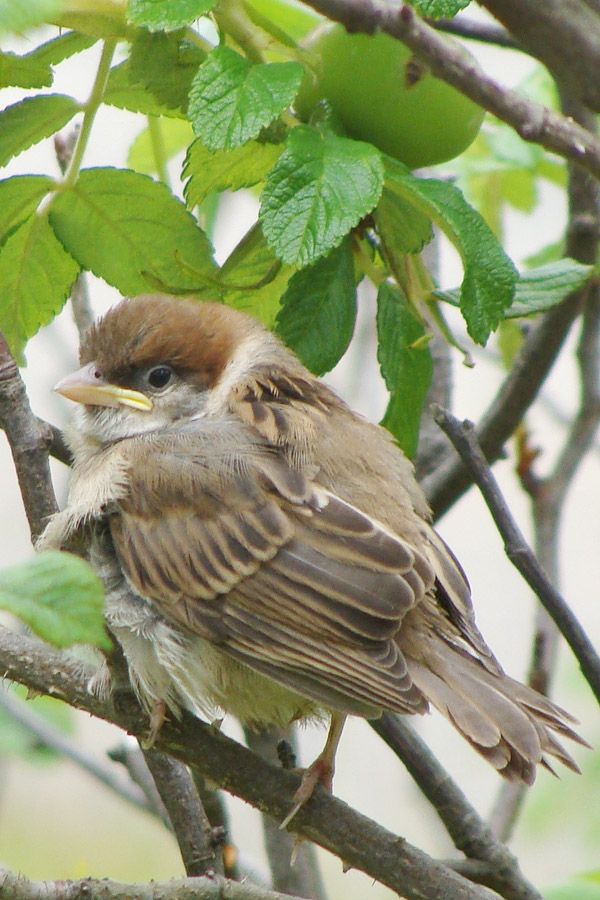
Eurasian Tree Sparrow
(Passer montanus)
The Eurasian Tree Sparrow is a passerine bird (also called a song bird) of the sparrow family. It is somewhat smaller and much more shy than the house sparrow. It lives in many parts of Asia and all over Europe with the exception of Iceland and central and northern Scandinavia. The sociable Eurasian Tree Sparrow winters with buntings and finches in integrated flocks. The adult birds feed mainly on seeds of herbs, grass and grain.
For brooding the Eurasian Tree Sparrow builds a rather untidy nest with an entrance at the side. The nest is typically located in cavities of old trees and constructed of stems, feathers, leaves and even flowers. The female lays four to six eggs and broods for 11 to 13 days. Some mates stay together for a lifetime and even use the same cavity for years in a row while other Eurasian Tree Sparrow males court a new female every spring.
The Art of Brooding *
Why We Lay Eggs
young like mammals do? You don’t know? Well, just imagine what it would be like for a pregnant bird to fly, with her large belly. And how would I feed myself for that period of time, if I were only able to walk around on the ground? The whole egg-laying system is one of our Creator’s patent ideas. It keeps me from being weighed down while flying. I lay my eggs one after another, at intervals of no more than 24 hours on average. That means that the egg-laying is finished quickly, and the eggs can all be incubated simultaneously. In this way, we birds can bring several young into the world at the same time.
The Art of Brooding
You probably think that this is one of the most boring occupations possible. That’s just because you have no idea of how difficult it really is. Do you really think we just set ourselves down on the eggs, and wait until the young are hatched? Have you any idea how sensitive our chicks really are? We have to provide just the right temperature, exactly the right level of moisture and even an undisturbed gas exchange. If these conditions weren’t right, our chicks would die before they were even born.
But our Creator had an ingenious idea, and it works like this: Even before I begin to lay eggs, the downy feathers on my belly fall out at two or three strategic locations. The exposed skin becomes noticeably thicker than before. The blood vessels increase sevenfold in number, and are about five times as thick as before. At the same time, lots of fluids accumulate in the cells of these “brooding spots”. What is all this? As soon as a brooding spot touches the egg, the egg temperature is reported to my middle brain. From there, the temperature is either directly controlled, or it is made clear to me that I need to move my body from the eggs so they can get some air, or that it’s time to get back to my “brooding post”. (...)
continued: Oh, there’s so much more I could tell you, ...
* quotes from the book "If Animals Could Talk"









